How Hamas Uses Civilians as a Weapon
The Dark Side of Clausewitzian War
“We see, therefore, that War is not merely a political act, but also a real political instrument, a continuation of political commerce, a carrying out of the same by other means.”
-Carl von Clausewitz, Prussian theorist and General
Clausewitz is no stranger to unsavory adherents. From Lenin, to Mao, to Hitler, “war as an act of policy” has held appeal, as has the idea that it is nothing more than “the pursuit of policy with the admixture of violent means.” For those predisposed to violence against noncombatants, this formula provided theoretical grounds for the erasure of the distinction between civilian and soldier, between war and peace. In other words, Clausewitz was useful for blurring the line between war and terrorism or genocide. Terrorism is defined as violence against civilians for a political purpose, typically by a non-state actor. This fits within Clausewitz’s most basic definition of war as the addition of violence to political intercourse.
The kind of violence towards civilians inflicted by Hamas on 10/7 is both a crime against humanity and an element of political discourse. It was destruction and slaughter not merely for its own sake, but in view of achieving a political objective. In this article, I will discuss how this kind of violence can be justified through a perversion of Clausewitz’s theories as well as how Hamas aims to use Palestinian civilians as a weapon. Finally, I will conclude with a discussion on the rights and obligations of Israel in light of these tactics, based on the laws of war.
Hannah Arendt illustrated the manner in which “thought terminating clichés” (such as the unity of war and politics) could be used to justify the Holocaust. Throughout the Second World War, soldiers in the Nazi army dismissed atrocities they witnessed or even participated in on the grounds that it was simply a part of war. By attributing the action to “war” it makes the crimes immutable and natural. Tragic, but unavoidable. It is a technique of deliberately removing the agency from the perpetrators so as to avoid the need to justify the unjustifiable. Whether it’s wrong to kill civilians is irrelevant if you don’t have a choice in the matter. The danger of thought-terminating clichés is their power to absolve oneself of blame by pretending there is no choice.

Clausewitz’s dictum of “war as an extension of policy by other means” can be easily transformed into a cliché that makes political violence appear necessary and legitimate. Clausewitz sought only to define war and explore its nature as a form of human activity. In this, he makes no argument as to how wars ought to be waged from an ethical standpoint. Thus, from his words it is possible to argue that war and politics are the same, and therefore political violence is no different from any other kind of political action. This is the Maoist reading of Clausewitz. Crucially, it goes beyond Clausewitz by arguing that political violence is inherently justified by the lack of distinction between war and other political intercourse. By appealing to philosophy and the nature of war and politics, the basic moral question as to the circumstances of legitimate use of violence (jus ad bellum, in other words) is ignored.
The Strategy of Hamas
Hamas is not necessarily thinking in explicitly Clausewitizian terms, but the lack of distinction between political action and violence is fully embraced by them. By declaring violence and politics to be inextricable, it can justify its violence as unavoidable, however extreme. This is reflected in a policy and strategy that rejects humanitarian concerns and the laws of war (jus in bello, laws that govern the conduct of war). This too is the grim face of Clausewitz’s conception of war. It is a matter of sheer force, with laws and legitimacy merely one factor among the political intercourse.
“The presence or movements of the civilian population or individual civilians shall not be used to render certain points or areas immune from military operations, in particular in attempts to shield military objectives from attacks or to shield, favour or impede military operations. The Parties to the conflict shall not direct the movement of the civilian population or individual civilians in order to attempt to shield military objectives from attacks or to shield military operations.” Geneva Conventions, Protocol I, 51(7).7
Hamas’ strategy, in Clausewitizian terms, can be understood as a form of absolute or total war. Because of the asymmetry in power between it and its adversaries, it takes a starkly different form than the kind of total war associated with the Second World War. Hamas, for example, released propaganda footage of the group digging up water pipes in the Gaza Strip to be used as rockets to kill Israelis. In this schema of total war, maintaining vital infrastructure is not as important as increasing offensive capacity. However, this capacity is not in conventional military capabilities, which are by necessity of secondary importance to the war effort. Hamas, as a result of its weakness, has limited ability to revise the situation under its own power, and must instead seek to engineer the intercession of third parties. This is the fundamental aim of its strategy and its actions must be interpreted through this lens to be understood.
The rocket attacks that Hamas perpetrates are certainly designed to kill Israelis, but that is only their secondary purpose. The primary purpose is to oblige an Israeli response. Israeli policy since 2006 has more-or-less been to let Hamas rot in the Gaza Strip, with Israel washing its hands of the problem and, crucially, keeping it out of headlines, thereby robbing Hamas of its political weaponry. Hamas’ continual aim has been to keep armed conflict simmering, to ensure that Palestine remains a cause célèbre in the Muslim world and prevent any political realignment in favor of Israel. To do that, there is one thing that is uniquely effective: Palestinian suffering. Where each Hamas rocket lands is not nearly as important as from where it is launched; where it is launched is where the Israeli retaliation will come. It is not the Israelis hurrying to bomb shelters that is the victory for Hamas, but the destruction of the school or apartment building from which the rocket originated. The photos, videos, and testimonials are the political weapons by which Hamas fights its war.
It is common—and correct—to assert that Hamas uses the residents of the Gaza Strip as human shields, deliberately embedding their fighters, leadership, and weapons in civilian positions so that they cannot be targeted without loss of innocent life. However, through the Clausewitizian lens, Hamas’ treatment of the civilians of Gaza is not just an inhuman and illegal way for Hamas to shield itself, but an offensive means. To illustrate, in a typical hostage situation such as a bank robbery, captured civilians are used to delay police operations, or to provide leverage for negotiations. The hostages may be threatened both for compliance and as a negotiating tactic, and occasionally even executed as a demonstration, but the hostage takers must keep them alive for bargaining and protection. Hamas’ approach towards the actual hostages it has taken is along these lines. But the same cannot be said for the people of Gaza. Hamas wants the people of Gaza to die, because dead Palestinians are a weapon. They are a weapon against international support for Israel and they are a weapon to pressure Muslim countries to attack Israel, or at least provide support to Hamas.
Hamas’ leadership keenly understands the international political landscape. More specifically, it has a firm grasp on the power of global antisemitism. Particularly in the Islamic world, the cause of Palestine has taken on a mythological and popular status. For Hamas, Palestinian martyrs–particularly civilians–are not lives lost, they are an invaluable political currency. With these, Hamas can fan the flames of Jew-hatred throughout the Muslim world, pressuring regimes that have strategic interests in partnership with Israel to take a firm stance against it, and ensuring the commitment of Iran and its network of proxies to the struggle. This may not prove successful, as countries have strategic interests that they may be unwilling to sacrifice in the name of Palestine, but it is Hamas’ strongest card to play which means it will do all it can to maximize the death toll in Palestine. The normalization of relations between Israel and the Arab states was therefore of serious concern for Hamas. It represented a failure of its strategy of using third parties to pressure Israel or intervene against it. Hamas no doubt hopes the outpourings of popular opinion across the Arab world in its favor will force a reorientation of policy to its benefit. This has not happened as of yet, but the crisis is far from over. As Hamas continues its policy of weaponizing civilians, the political pressure will mount.
Anti-Semitism is, of course, not unique to the Muslim world and accusations against Israel have a headline-grabbing potency the world over. Calls for the destruction of Israel and dog-whistles to that effect have been prevalent in the left-wing of activist and academic circles. Less overtly genocidal forms of antisemitism take the shape of enduring beliefs about Jewish control over media and politics, as well as disproportionate criticism of Israel. Hamas is aware of Western liberal and leftist sympathy for Palestine, and the antipathy for Israel’s right-wing government among this bloc. While this segment of the population is not especially large, it is a group particularly influential in media, academia, and government. The overwhelming majority of these people are not sympathetic to Hamas, but think badly of Israel, or at least its government, and are therefore more likely to believe things that reinforce those preconceptions.
Images and stories of those injured or killed in Israeli strikes have powerful pathos to these people. It is understandable that the average person places the blame for a death on the party that fired the shot (or dropped the bomb). This is a fair rule of thumb in most cases, but this is not true in the case of a force that deliberately places civilians in harm’s way. That it is Israeli bombs and bullets doing the actual killing is enough to obscure the blood on Hamas’ hands for those who view the situation only as a dichotomy between oppressor and oppressed. In truth, a terror group is cynically spending the lives of the men, women, and children it governs to advance its agenda-a program that amounts to little more than the killing of as many Jews as it can reach.
One of the most serious forms of Jew-hatred drummed up by Hamas is the form of blood-libel known as “Holocaust inversion.” Hamas is particularly fond of this narrative, inverting the narrative of the Holocaust by casting the Jews as the new Nazis, perpetrating a genocide against the Palestinian people. This is typically accompanied with claims minimizing the actual Holocaust or placing the blame for it at least partially on the Jews themselves. As an example of its prevalence, this latter part of the narrative was the basis of President Abbas of the Palestinian Authority’s doctoral thesis.
This narrative in particular finds dead Palestinians useful. Each body lets Hamas make the case to sympathetic ears that the Jews are perpetrating the worst crime in history. The conflict is portrayed as two peoples in a death-struggle, making no distinction between combatants and civilians. Hamas puts Gazans in harm’s way and then uses their deaths to justify the targeting of Israeli civilians. This technique has been so successful that some Western academics and activists have failed to condemn or have even expressed support for Hamas on the basis of accepting the view of the conflict as a death-struggle, where there is no distinction between civilian and combatant.
Clausewitz’s Good Side
Hamas is no doubt aware that if it can gain access to the humanitarian aid supplied to Gaza, that will create both a legal basis and strategic drive for Israel to prevent further aid reaching Gaza. Hamas will be able to force a decision on Israel whether to deny aid to Gaza on the basis that it is being appropriated by combatants and accept the humanitarian consequences, paying a steep political price or to allow the aid, accepting that some amount will be diverted to Hamas.
From a strictly military perspective, the answer is clear: Israel should not allow entry to supplies that will reach enemy combatants. Allowing humanitarian aid to enter will prolong the war and increase Israeli casualties as it fights an enemy that benefits from a greater stock of food and medicine and can therefore fight more effectively and is less likely to surrender quickly.
Clausewitz tells us that war, however, is not merely a political instrument, but political in its execution. As such, Israel may decide the political value of avoiding widespread deaths of deprivation in Gaza is worth enduring the military disadvantage. This is a central lesson of Clausewitz to strategic decisions: political factors will often dictate military actions and it is appropriate that they do. The humanitarian and moral dimension is also an appropriate dimension to direct the conduct of war. Politics is not purely power politics. War is not merely an act of policy, but part of it. States, especially democracies, reflect the policy priorities of its citizens. It is appropriate that the conduct of its wars reflect these priorities, including the moral and humanitarian standards that exceed its obligations under the laws of war. War is the addition of violence to politics; it does not necessitate the removal of compassion or humanitarian concern from policy.
Going Forwards
Hamas killed at least 1400 Israeli civilians in a single day. As aforementioned, there is no doubt that they would kill more if given the opportunity. “Live and let live” is not a viable policy for Israel. It should go without saying a country cannot endure a neighboring regime with a genocidal disposition. The state of Israel’s responsibility to defend its citizens requires it to destroy Hamas. In any military operation of sufficient scale, some number of innocent bystanders will be killed, even if all parties follow the laws of war with the most benevolent of intentions. That is not what is happening in Gaza. Hamas has transformed much of the population of Gaza into both human shields and political weapons.
When Hamas operates from apartment buildings it bears total responsibility for endangering the lives and livelihoods of those who reside in and around it. Israel is not obligated to refrain from striking Hamas on account of the civilians they have surrounded themselves with, nor should they be expected to. Hamas is aware of this. It is for this reason that I believe the term “human shield” is in this case misleading. Hamas knows that Israel has no choice but to strike back. The civilians do not shield them. Their deaths are not contingent, like hostages, but engineered.
“…refrain from deciding to launch any attack which may be expected to cause incidental loss of civilian life, injury to civilians, damage to civilian objects, or a combination thereof, which would be excessive in relation to the concrete and direct military advantage anticipated;” Geneva Conventions Protocol I, 57.2.iii
It must be stated emphatically that the policies of Hamas do not absolve Israel from the responsibility of following the laws of war. Both morally and legally, there is an obligation to minimize civilian casualties. That duty does not disappear merely because one side abrogates it. However, the policies of Hamas deliberately make it difficult to assess the legality of Israeli actions and seek to obfuscate moral responsibility for civilian deaths. That Hamas has a standing policy of violating the laws of war and is avowed to commit crimes against humanity does not mean Israel cannot perpetrate criminal acts, whether individually or on the policy level. However, the methods used by Hamas make this very difficult to ascertain. Without unusually clear evidence, it will be nearly impossible to judge Israel guilty of disproportionate use of force or of striking non-military targets. Because of Hamas’ pattern of positioning itself within those targets, it would be necessary to affirm not only that Hamas was not based there, but that Israel either knew that or was negligent in its analysis.
This is a particularly difficult point for many, because it means that regardless of how many civilians are killed in an Israeli action, it only rises to the level of criminality if those civilians were not placed in danger by Hamas, who bear the unequivocal responsibility of distinguishing themselves, as combatants, from civilians. Not in the general sense that Hamas endangered the population of Gaza by starting this war, but specifically placing civilians in positions that strikes on military targets result in their death or injury.
Hamas’ use of civilians as a weapon limits the opportunity to usefully monitor Israeli strikes in the Gaza Strip. Whether a strike was or was not justified or proportional can only be assessed based on intelligence that likely cannot be released until after the war. Certainly it is just and appropriate that investigations take place after the conflict as to whether Israel followed the laws of war. It is not inappropriate to attempt to monitor compliance with the law during the war, but it must be done with the understanding of Hamas’ weaponization of civilians and the ensuing difficulties in determining proportionality. It is irresponsible to report on civilian casualties in Gaza without clearly defining Hamas’ responsibility for them under the laws of war.
“In order to promote the protection of the civilian population from the effects of hostilities, combatants are obliged to distinguish themselves from the civilian population while they are engaged in an attack or in a military operation preparatory to an attack.” Geneva Conventions Protocol I, 43.1, 44.1)
The final point I wish to make is that while this article has focused on Gaza and Hamas, Israeli settlers in the West Bank have intensified persecution of Palestinians, with tacit or explicit support from the Netanyahu government. This aggressive behavior includes expulsions, which could amount to ethnic cleansing. Israel has the right to retaliate against Hamas for its aggression on 10/7. But it does not have the right to target civilians or carry out campaigns of settlement and annexation. The fighting in Gaza must not be allowed to obscure or excuse the failure of Israel to protect Palestinians in the West Bank. It is imperative to understand both that Hamas bears the blame for endangering civilians in the Gaza Strip and that settler violence in the West Bank must be prevented by Israel.



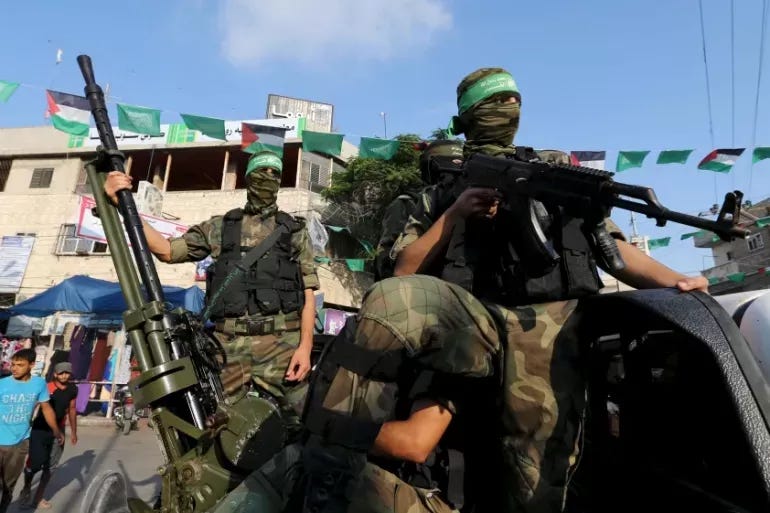
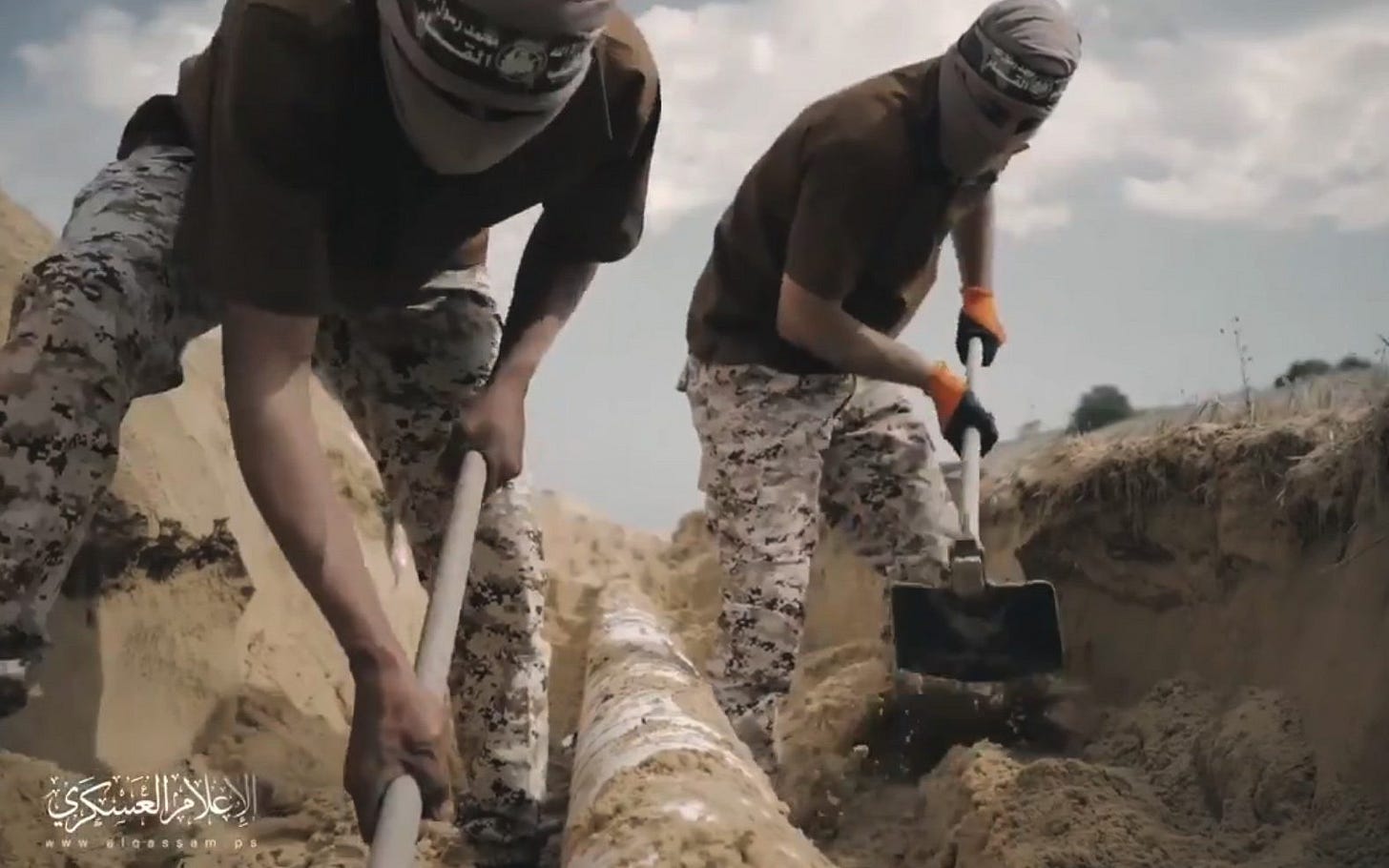
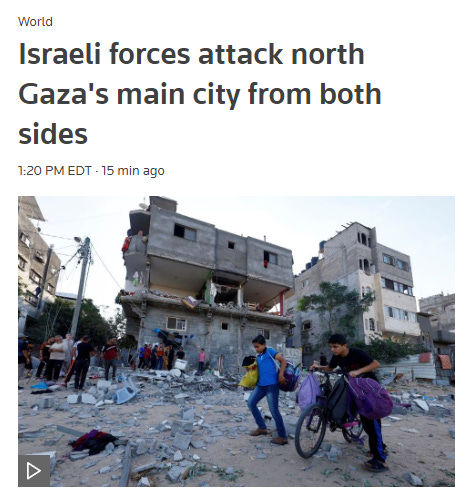
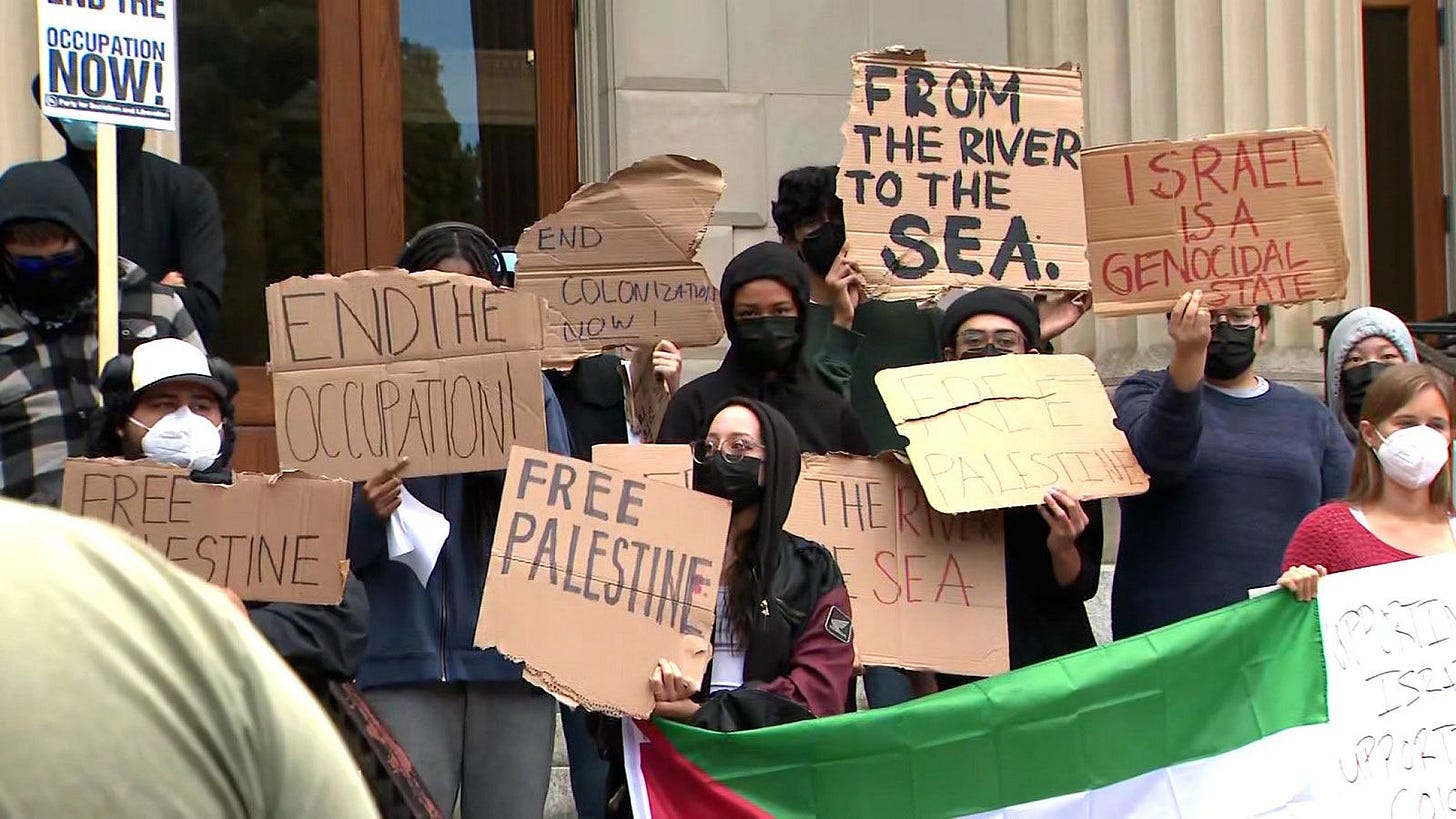
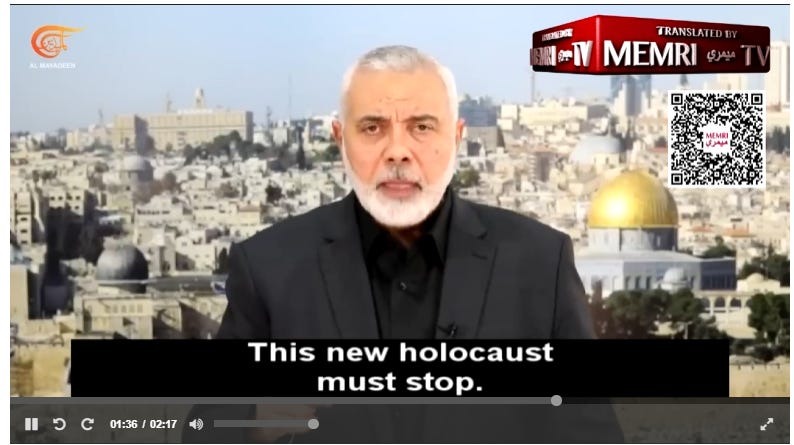
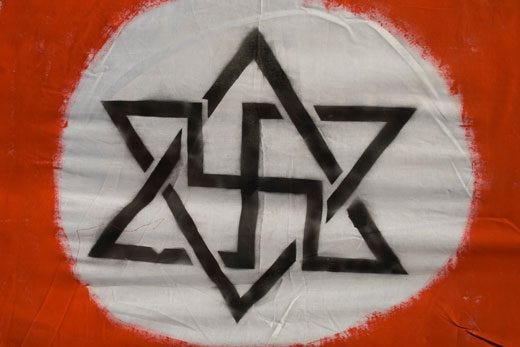
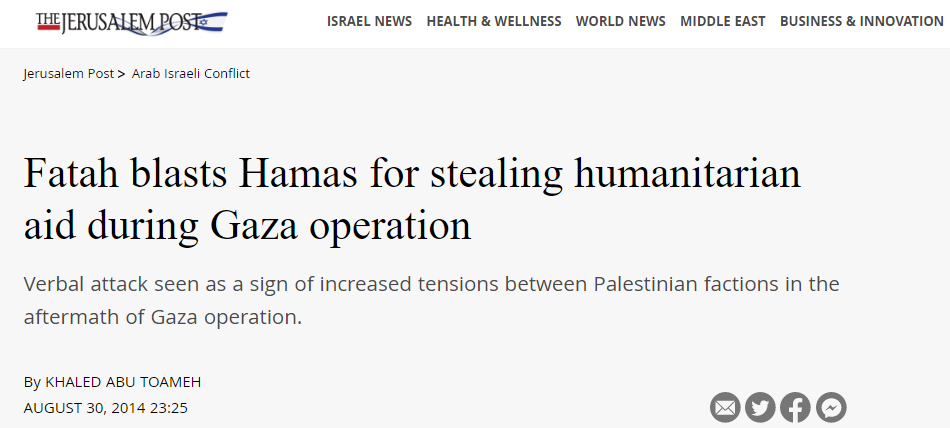
Good article, will share this with a few friends.
The fact that Hamas deliberately places its military facilities near concentrations of civilians needs to be propagated more. Too many still see Hamas as a kind of resistance group that fights for the people of Gaza and Palestine, when in fact they provoke their death for political capital.
From both an ethical and strategic point of view, a ground offensive into Gaza imho is only justifiable if you have a long-term plan of completely destroying Hamas and installing a more moderate government. Otherwise Israel only produces political wins for Hamas and dead people for little in return, since the Hamas hydra just regrowth its heads unless you kill it completely.
It is infuriating that Israel still continues its settlement policy in the West bank, especially because this causes support for organizations as Hamas and makes it hard to decidedly stand with Israel. While there are of course reasons for this policy, from an outsider's POV this just seems like such an obvious mistake that it is hard to believe anyone could make them.
I thought this post was very helpful for thinking about the allocation of blame regarding the tragic loss of life in Gaza.
Kiran, I appreciate how you offer dispassionate analysis of the war as a result of rational-ish decision making, but you're not afraid to provide ethical commentary as well.